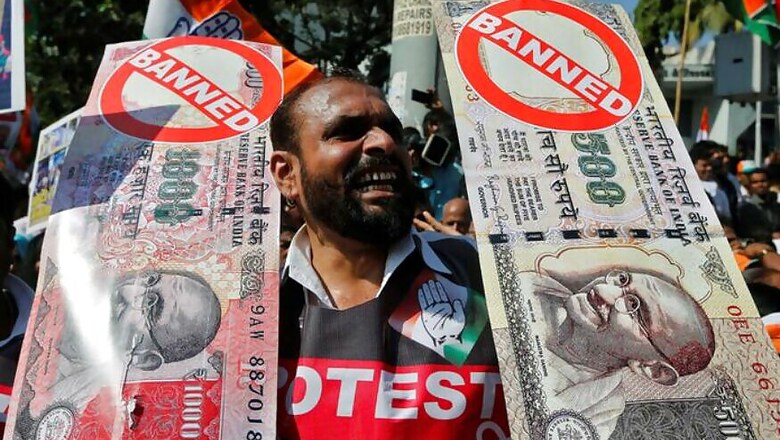
views
New Delhi: Could it be that the RBI is as befuddled about the wider impacts of demonetisation as us common folk?
Well, not only has the central bank stayed away from announcing a much-expected — and some would say a much-deserved — cut in the benchmark repurchase rate, it has failed to offer a concrete reason why rates should be kept at the earlier levels despite the steep fall in inflation post the demonetization drive.
The repurchase rate – the interest rate at which RBI lends to banks – has been held at 6.25%. A reduction in this rate makes loans cheaper for customers of banks, thus cranking up the economy. Markets, which were expecting a rate cut in the range of 25-50 basis points, fell as a result and the rupee sharply depreciated against the dollar.Also Read: RBI Keeps Interest Rates Unchanged, Lowers Growth Forecast
The only clue as to the line of thinking at Mint Street lies in this paragraph in the latest monetary policy statement:
“While supply disruptions in the backwash of currency replacement may drag down growth this year, it is important to analyse more information and experience before judging their full effects and their persistence – Short-term developments that influence the outlook disproportionately warrant caution with respect to setting the monetary policy stance. If the impact is transient as widely expected, growth should rebound strongly”
So, basically, the RBI is saying that there are no data points that fully capture the impact of demonetization, and hence, in the lack of concrete information it is erring on the side of caution and not tinkering with interest rates in order to provide a boost. Also Read: Sensex Slips into Red as RBI Keeps Policy Rate Unchanged
“The instruments of monetary policy are broken,” said Pronab Sen, former Chief Statistician of India, speaking to told News18. “Banks are in no position to extend new credit,” Sen, who is the India Director for the International Growth Centre’s India programme, said.
Upasna Bhardwaj, an economist with Kotak Mahindra Bank, felt that the RBI would rather wait till its next policy decision in February to assess how the economy has been affected. “But it is a disappointment for markets, no doubt. They were expecting at least a 0.25 percentage point cut,” she said.
Most economists were expecting an interest rate cut, however some, like Pronab Sen, maintained that post demonetisation, monetary policy will not be effective.
Banks are flush with deposits as consumers make a beeline to return the old notes of Rs 500 and Rs 1000. So far 11 lakh crore has returned to the RBI coffers – the demonetized notes are valued at Rs 14.17 lakh crore at the end of March 2016.
However, this money is in the form of old currency, the 500 and 1,000 rupee notes that people have rushed to deposit in banks. These cannot be lent out by banks because they are not longer legal tender any more after the dramatic announcement by Prime Minister Narendra Modi on November 8.
So does this mean that the government will now have to pick up the slack and give a boost to the economy through a fiscal stimulus? Already there are calls from various quarters for a cut in income tax to boost consumption.
However, this runs the risk of reducing the government’s tax revenue and increasing its fiscal deficit. Further, the government will be constrained by the Fiscal Responsibility and Budgetary Management Act. How the RBI and the government respond will depend on how quickly they can get the economy back on the growth track.




















Comments
0 comment